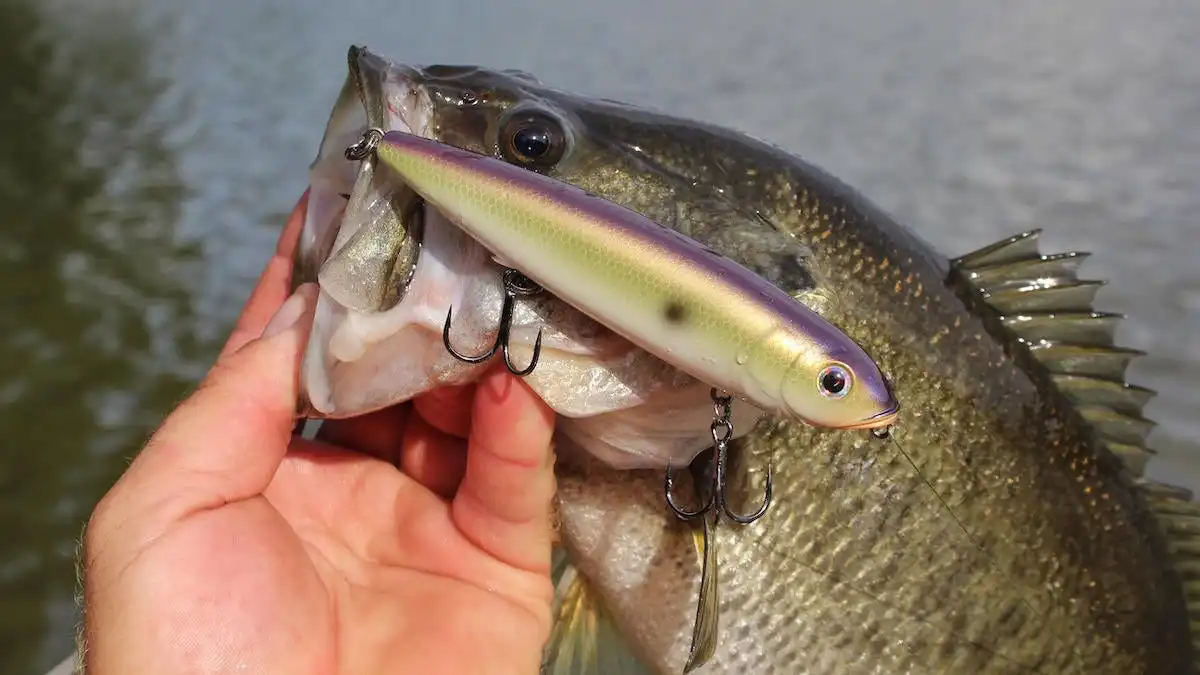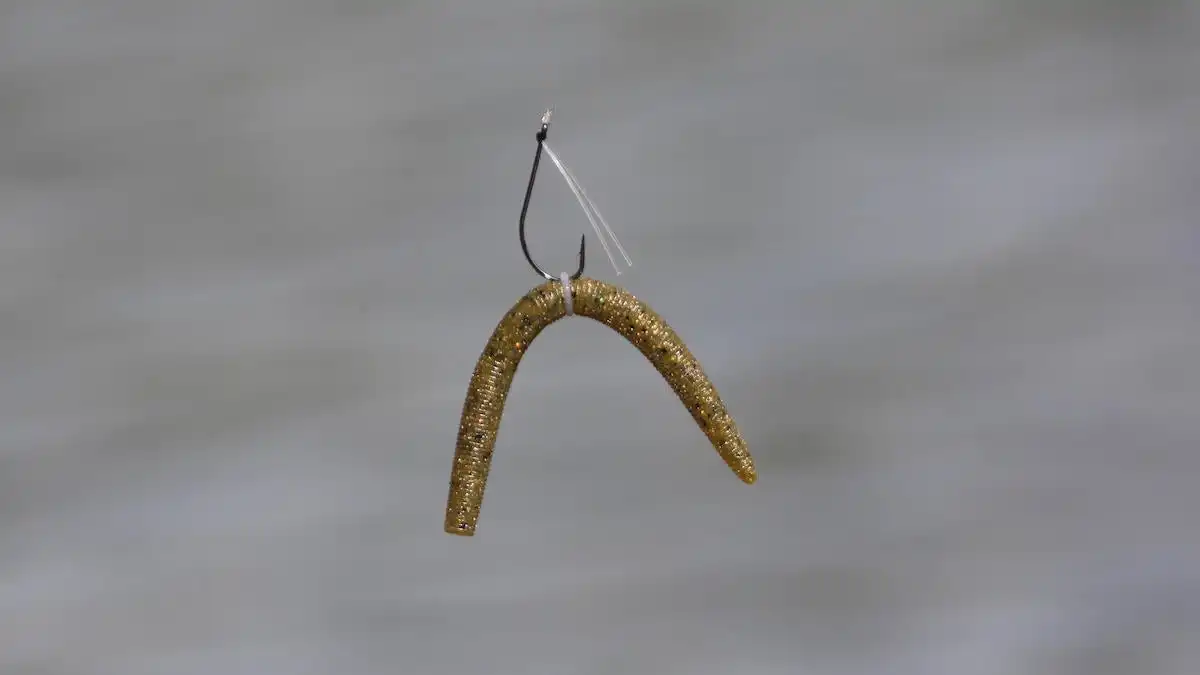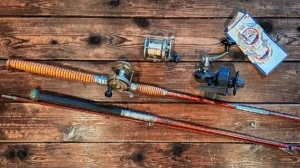The immediate post-spawn period is one of the toughest times to find and catch largemouth bass. The majority of the fish have just undergone the arduous spawning process, creating shallow beds, laying eggs and warding off natural predators like bluegill, crawfish and other bass.
Meanwhile, we as anglers have been eavesdropping on the process, bopping them on the head with a relentless hailstorm of artificial baits in hopes the big females will take the bait we’re offering.
When it’s all said and done, these fish just want to be left alone. Well, that’s just not an option for the angler in hot pursuit. So, where do they go and how do we catch them?
HOW TO FIND LARGEMOUTH AFTER THE SPAWN
While some largemouth do spawn deeper, the majority of them spawn in less than 3 feet of water. Especially on fisheries with stained to muddy water. It’s my understanding that a certain amount of sunlight needs to reach the beds to incubate the eggs. This is why bass spawn shallower in muddy water and deeper in clear.
Even if you’re fishing a lake right after the spawn, knowing where the bass were spawning is the first step in finding where they are in the post spawn. Again, these bass are often exhausted. Which means they are not apt to roam far when they come off the bed.
Sure, some head straight offshore in search of deeper, cooler water, especially in creeks and rivers and on current driven reservoirs like the Tennessee River. However, a large portion of the bass stay shallow the first week or two after they spawn. Figuring out where fish have been bedding will narrow your search down quite a bit in finding the bass that have come off the bed.
Largemouth like to bed in slack, shallow water and typically around some sort of cover. This can look like an isolated stump in a slough, a hole in the hydrilla right off the river channel or on a dock post in the back of a main-lake pocket. The key is looking for cover in shallow areas out of the current. Visually looking for white spots on the bottom in an area where the water is clear will also help you identify areas where the bass have been bedding.
WHY LARGEMOUTH STAY CLOSE
Largemouth can often find all they need to recuperate in the general vicinity of their bedding area. Shade is a big one. As the water warms, the bass like to tuck into shade, where they can take time to heal up. Shade is abundant in the shallow in the form of docks, bushes and moored boats. Bass like to get in these shady spots to chill out for a few days.
There’s also plenty of food in the shallow this time of year. As the bass come off bed, the shad spawn hits its peak. Post-spawn bass are able to gorge themselves on spawning shad early in the morning, then tuck back up in the shade to ride out the heat of the day until it’s time to repeat the process the next morning. Herring and bluegill also start to spawn around this time, giving the bass even more food to choose from in the shallow.
Running water is another reason bass often stay shallow. Little run-ins, creeks and other areas where cooler water dumps into a reservoir are key places to look right after the spawn. These areas are typically rich in oxygen levels and the cooler water is a welcomed reprieve from the rising temps.
Bass fry stays shallow too. This is yet another reason the bass that spawned these fry often hang around as well. If you keep a keen eye out in the shallow as the spawn winds down, you’ll often spot little clouds of baby bass known as fry.
These bass fry ball up and hover close to cover, while the male bass that participated in their production hang close to protect the young. These males are known as fry guarders. They keep bluegill, other small bass and even the mother of the fry at bay as these predators all look to take advantage of the defenseless young.
HOW TO CATCH THEM
Now that you’ve found the areas where post-spawn bass reside and you know why they are there, how do you catch them? It really all comes down to two things: you’ll want to choose your baits based on the match-the-hatch method and you’ll want to use baits that you can present to the bass effectively.
Matching the hatch is the standard practice we all fall back on when it comes to bait selection. You’ll want to select a lure that mimics the natural forage in size, color, profile, and even in action. Knowing that the post-spawn bass are shallow and either looking for an easy meal or looking to defend their young from predators like bluegill, selecting a popper in a bluegill pattern is a great place to start.
Throw a popper into shady areas to allow you to fish a bait that looks similar to the natural forage in the area. It’s easy to track down and over take because of its stop-stall-and-go action and it appears to be doing what a bluegill would be doing this time of year—feeding on the fry. Knowing all of this makes a popper a great selection for fishing in open water and around isolated cover.
However, a popping frog can do all these same things a popper can do, and it can be skipped far easier, making the popping frog an even better selection for the post-spawn when there are a lot of docks, pontoons and/or bushes present. Though both of these baits match the hatch well in size, color, profile and action, the frog is even better in the second situation because it can be presented to the bass more effectively.
Swimbaits, skipping jigs and wacky rigs are all great baits as well for this time of year when targeting fry guarders under bushes, docks and other overhead cover. What about targeting bass around bait spawns?
BAIT SPAWNS
Several different baitfish species will spawn shallow right as the bass are winding down their spawning process. As a reminder, you’ll want to select your baits starting with the match-the-hatch method first. Use the adaptability of the bait to the situation as your second criteria to narrow down your selection.
For example, let’s say shad are spawning in scattered shoreline water willow grass. While a lipless crankbait and a swim jig both mimic the bait well in size, color, profile and action, the swim jig is far better because of its ability to sneak its way through the vegetation without hanging up. Move this scenario a hundred yards down the bank to a seawall and a Strike King Sexy Dawg is likely a better call than the swim jig, due to the abundance of hooks hanging below the bait that make it more effective at latching onto a swiping fish as opposed to the single hook of a swim jig.
Buzzbaits, swimbaits, swim jigs, spinnerbaits, jerkbaits and other topwaters are all great shad spawn baits, depending on the cover the shad are spawning in, around or against. Many of the same baits work well around herring spawns. Then there are the bluegill spawns, where topwaters and wacky rigs seem to win out more often than not.
With almost any bait spawn, the early bite is the best. If you get on a good shad spawn first thing in the morning, you can load the boat in 20 minutes. And you’d better. More often than not, the bite completely dies when the sun gets up and all those bass that were gorging moments ago get lockjaw for the rest of the day.
IN CONCLUSION
There’s an art to fishing for largemouth in the immediate post-spawn phase. It’s not easy, but it’s not as hard as some might think either. The key is efficiency. Knowing where to look and understanding why you should look there is key. Areas that offer reprieve near spawning grounds are prime real estate; these areas will usually have an abundance of shade and/or little current.
Once you find the right kind of area, have baits ready for the job. Gather together a handful of lures that match the hatch in size, color, profile and action, and then narrow that handful down to one based on how effectively you can present the bait to the bass given the set of circumstances.
Lastly, get out there early. If you want to make the most of a day of fishing in the early summer, immediate post-spawn phase, you’ll want to be on the water with rod in hand before the sun even breaks the horizon. The fishing can be phenomenal for the first hour, and an all-out grind the rest of the day. Even then, if you take these tips into consideration, you’ll hopefully find it’s easier than you thought to find and catch largemouth bass during the immediate post spawn.

















